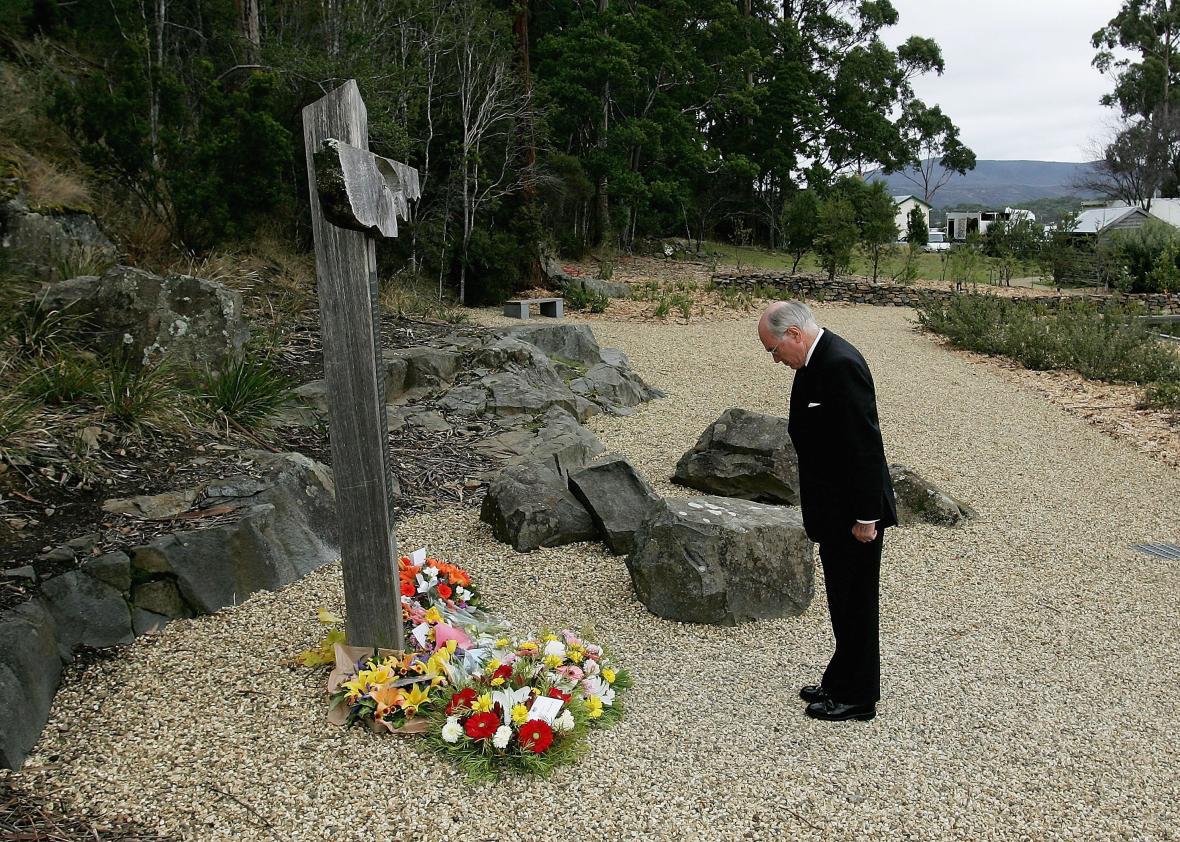As America grapples with the fallout of yet another mass shooting—a school shooting in Parkland, Florida, on Wednesday has left at least 17 people dead, according to law enforcement officials—the long and bitter debate over gun control in America will inevitably be reopened. After Sandy Hook, Will Oremus highlighted the lessons of Australia’s strict gun laws and the resulting success in preventing subsequent mass shootings there. The original post is reprinted below. Oremus also checked back in on how Australia’s gun laws were doing for a 2017 post that can be read here.
On April 28, 1996, a gunman opened fire on tourists in a seaside resort in Port Arthur, Tasmania. By the time he was finished, he had killed 35 people and wounded 23 more. It was the worst mass murder in Australia’s history.
Twelve days later, Australia’s government did something remarkable. Led by newly elected conservative Prime Minister John Howard, it announced a bipartisan deal with state and local governments to enact sweeping gun-control measures. A decade and a half hence, the results of these policy changes are clear: They worked really, really well.
At the heart of the push was a massive buyback of more than 600,000 semi-automatic shotguns and rifles, or about one-fifth of all firearms in circulation in Australia. The country’s new gun laws prohibited private sales, required that all weapons be individually registered to their owners, and required that gun buyers present a “genuine reason” for needing each weapon at the time of the purchase. (Self-defense did not count.) In the wake of the tragedy, polls showed public support for these measures at upwards of 90 percent.
What happened next has been the subject of several academic studies. Violent crime and gun-related deaths did not come to an end in Australia, of course. But as the Washington Post’s Wonkblog pointed out in August, homicides by firearm plunged 59 percent between 1995 and 2006, with no corresponding increase in non-firearm-related homicides. The drop in suicides by gun was even steeper: 65 percent. Studies found a close correlation between the sharp declines and the gun buybacks. Robberies involving a firearm also dropped significantly. Meanwhile, home invasions did not increase, contrary to fears that firearm ownership is needed to deter such crimes. But here’s the most stunning statistic. In the decade before the Port Arthur massacre, there had been 11 mass shootings in the country. There hasn’t been a single one in Australia since.
There have been some contrarian studies about the decrease in gun violence in Australia, including a 2006 paper that argued the decline in gun-related homicides after Port Arthur was simply a continuation of trends already under way. But that paper’s methodology has been discredited, which is not surprising when you consider that its authors were affiliated with pro-gun groups. Other reports from gun advocates have similarly cherry-picked anecdotal evidence or presented outright fabrications in attempting to make the case that Australia’s more-restrictive laws didn’t work. Those are effectively refuted by findings from peer-reviewed papers, which note that the rate of decrease in gun-related deaths more than doubled following the gun buyback, and that states with the highest buyback rates showed the steepest declines. A 2011 Harvard summary of the research concluded that, at the time the laws were passed in 1996, “it would have been difficult to imagine more compelling future evidence of a beneficial effect.”
Whether the same policies would work as well in the United States—or whether similar legislation would have any chance of being passed here in the first place—is an open question. Howard, the conservative leader behind the Australian reforms, wrote an op-ed in an Australian paper after visiting the United States in the wake of the Aurora shootings. He came away convinced that America needed to change its gun laws, but lamented its lack of will to do so.
That’s certainly how things looked after the Aurora shooting. But after Sandy Hook, with the nation shocked and groping for answers once again, I wonder if Americans are still so sure that we have nothing to learn from Australia’s example.
